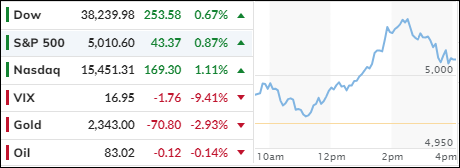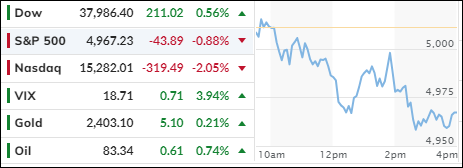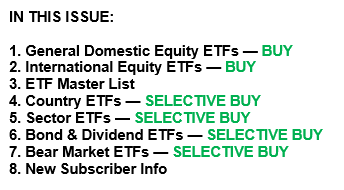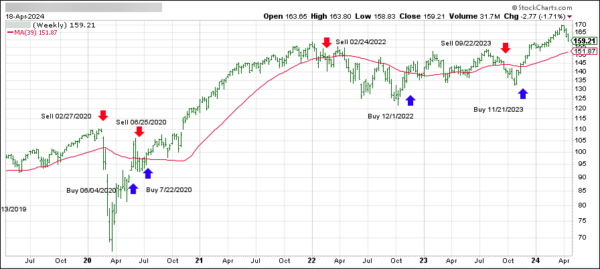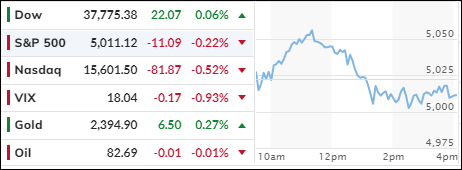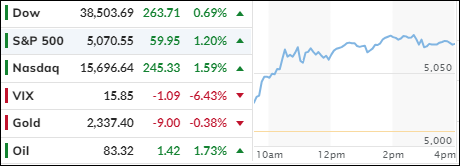
- Moving the markets
In today’s financial landscape, the U.S. stock market experienced a significant rally, energized by the unfolding corporate earnings season. Investors were keen to capitalize on the robust gains from the previous session, setting a positive tone for the market.
The anticipation was palpable as Tesla prepared to release its earnings report after the market closed, marking the beginning of a series of high-profile earnings announcements. Meta Platforms is expected to follow suit on Wednesday afternoon, with the tech giants Alphabet and Microsoft completing the lineup later in the week.
The earnings season has been off to a promising start, with about a fifth of the S&P 500 companies having reported by Tuesday morning. Of these, an impressive three-quarters have surpassed analysts’ expectations, suggesting a resilient corporate sector.
This upbeat trend in earnings comes as a welcome change, especially after the recent downturn in technology stocks. Names like Nvidia had suffered losses amid concerns over rising inflation and the potential for higher interest rates, but investors showed renewed confidence, engaging in strategic buying to leverage the dip in prices.
The real estate market also delivered some unexpected, good news, with new residential home sales in March accelerating at a pace that outstripped forecasts. The sales figures for single-family homes stood at 693,000 for the month, a notable increase from the revised figure of 637,000 in February and surpassing the Dow Jones estimate of 669,000.
This surge in sales led to an 8.8% gain in March, significantly higher than the anticipated 1.1%. Furthermore, the median sales price soared to $430,700, the highest it has been since the previous August, indicating a robust demand in the housing market.
The broader economic picture paints a complex yet intriguing scenario. Despite a decline in manufacturing and services data, which caused the Macro Surprise index to falter, the market interpreted this as a harbinger of potential rate cuts in 2024. This paradoxical reaction, where bad news is perceived as good news, underscores the market’s nuanced dynamics.
The previous day’s short squeeze escalated, resulting in the most substantial two-day squeeze since the end of February. The major tech stocks, collectively known as the MAG7, participated in this upward trend, although they fell short of erasing the week’s earlier losses.
In the bond market, yields fluctuated, with the 2-year yield facing resistance at the 5% threshold. The currency market saw the dollar decline, while gold experienced a minor drop. Bitcoin maintained stability at around $67,000. In the commodities market, oil prices demonstrated resilience, forming a V-shaped recovery to close above $83.
As we await Tesla’s earnings report, will it contribute positively or negatively to the current market environment?
Read More
